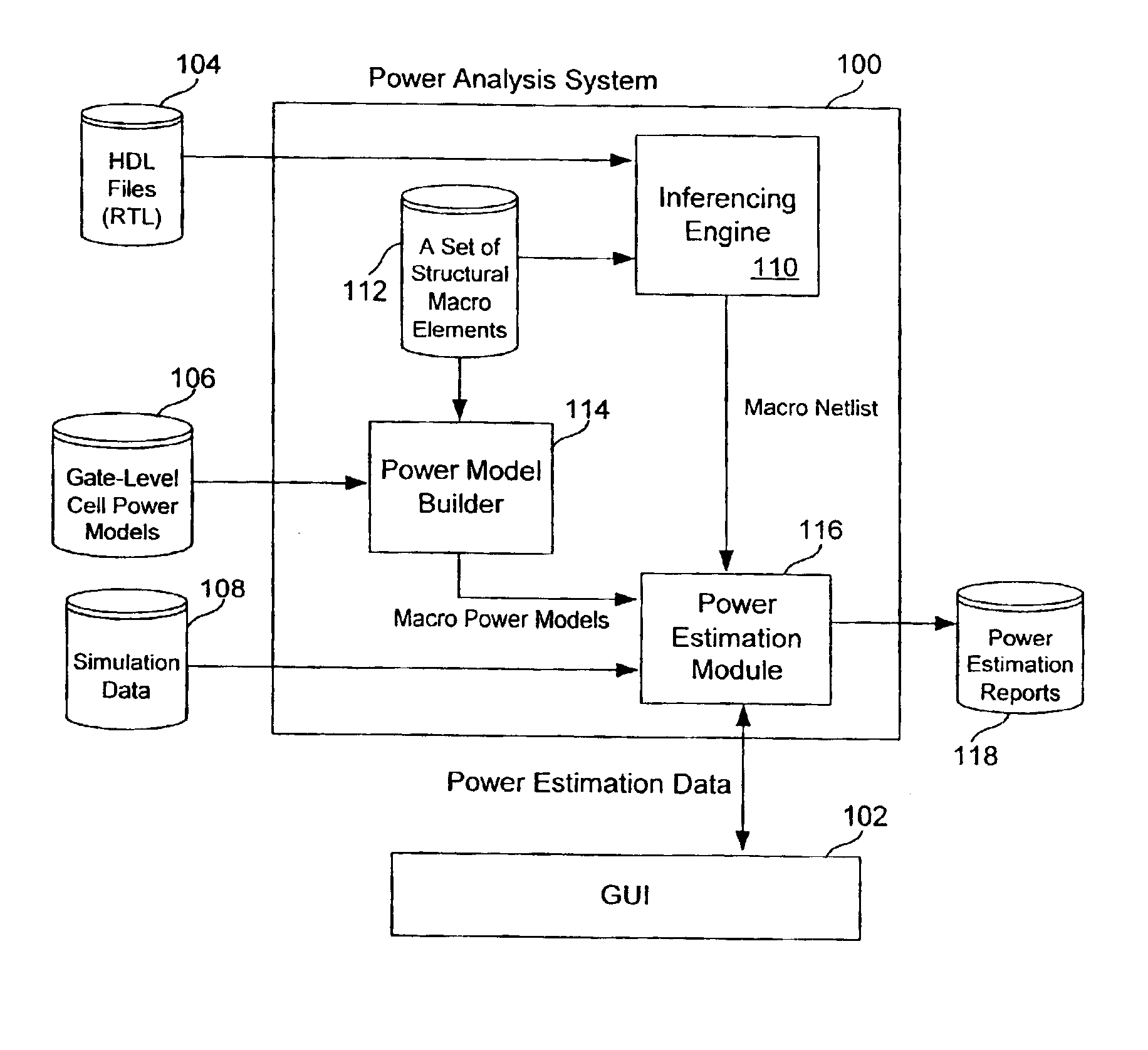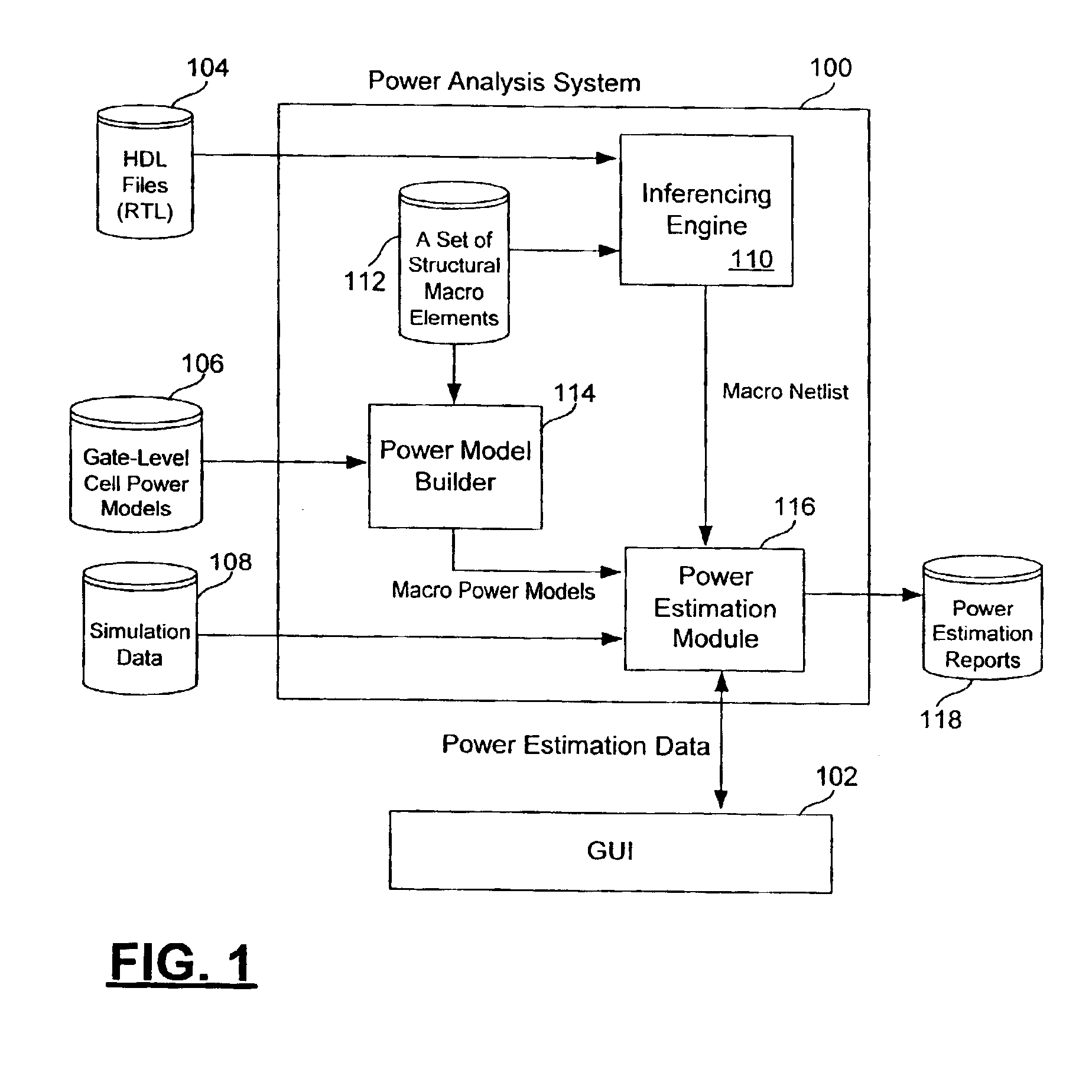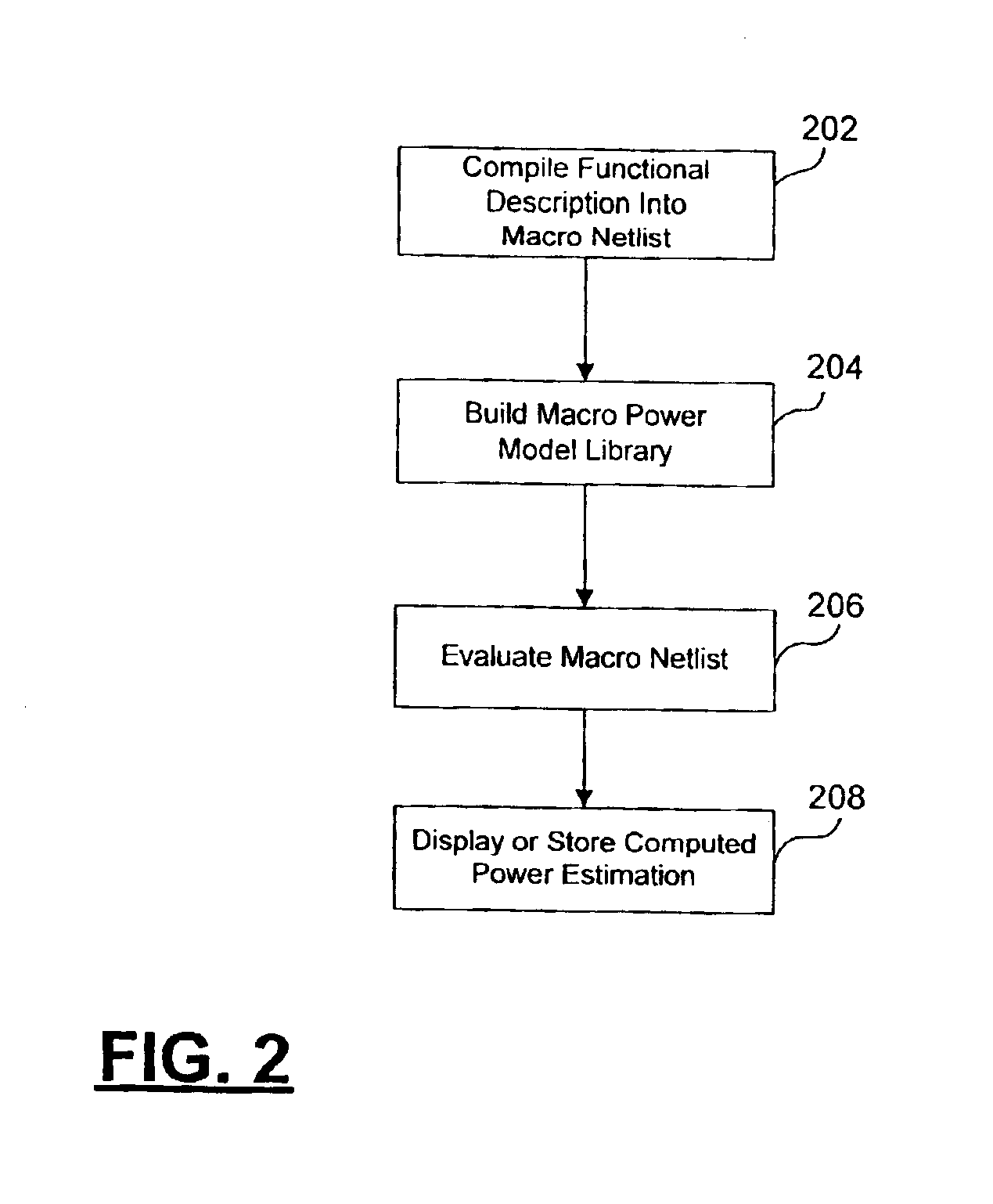RTL power analysis using gate-level cell power models
a power analysis and gate-level technology, applied in the field of system and a method for estimating power consumption of semiconductor chip design, can solve the problems of less useful gate-level power analysis, inconvenient and burdensome for a designer, and power estimation based on pin-based power models is known to be less accurate than arc-based power models
- Summary
- Abstract
- Description
- Claims
- Application Information
AI Technical Summary
Benefits of technology
Problems solved by technology
Method used
Image
Examples
Embodiment Construction
[0025]According to the principles of the present invention, a power analysis system estimates the power consumption of an electrical design, such as an integrated circuit design, specified at the register-transfer level (RTL) using a gate-level cell power model library and simulation data of the design. In one embodiment, the power analysis system creates canonical macro power models based on syntax-specific power models in the gate-level cell power model library. The power analysis tool also transforms the RTL design into structural macro instances which can then be evaluated using the canonical macro power models and available switching activity and duty cycle data for the pins of the macro instances. The power analysis system of the present invention is capable of supporting arc-based gate-level power model libraries and supporting arc-based power models written in different formats or written using varying syntax within a format. The power analysis system of the present inventio...
PUM
 Login to View More
Login to View More Abstract
Description
Claims
Application Information
 Login to View More
Login to View More - R&D
- Intellectual Property
- Life Sciences
- Materials
- Tech Scout
- Unparalleled Data Quality
- Higher Quality Content
- 60% Fewer Hallucinations
Browse by: Latest US Patents, China's latest patents, Technical Efficacy Thesaurus, Application Domain, Technology Topic, Popular Technical Reports.
© 2025 PatSnap. All rights reserved.Legal|Privacy policy|Modern Slavery Act Transparency Statement|Sitemap|About US| Contact US: help@patsnap.com



